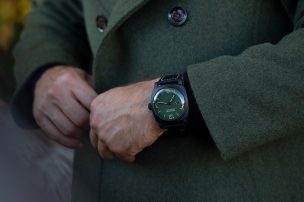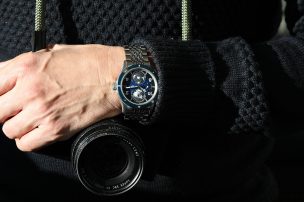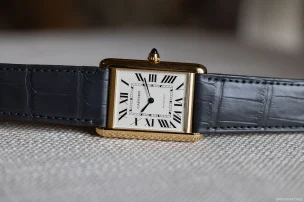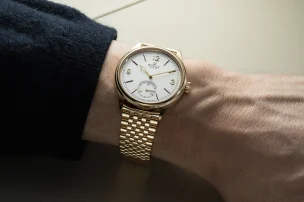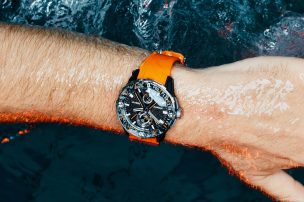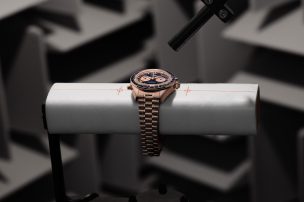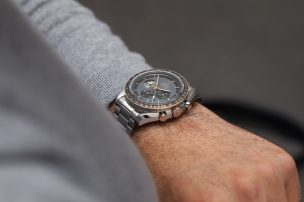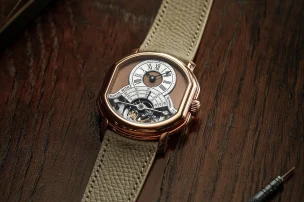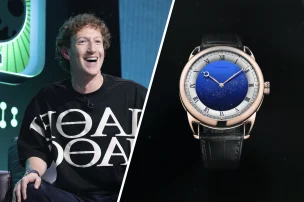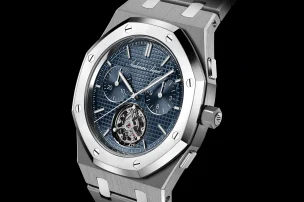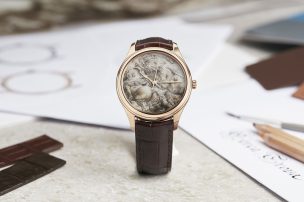
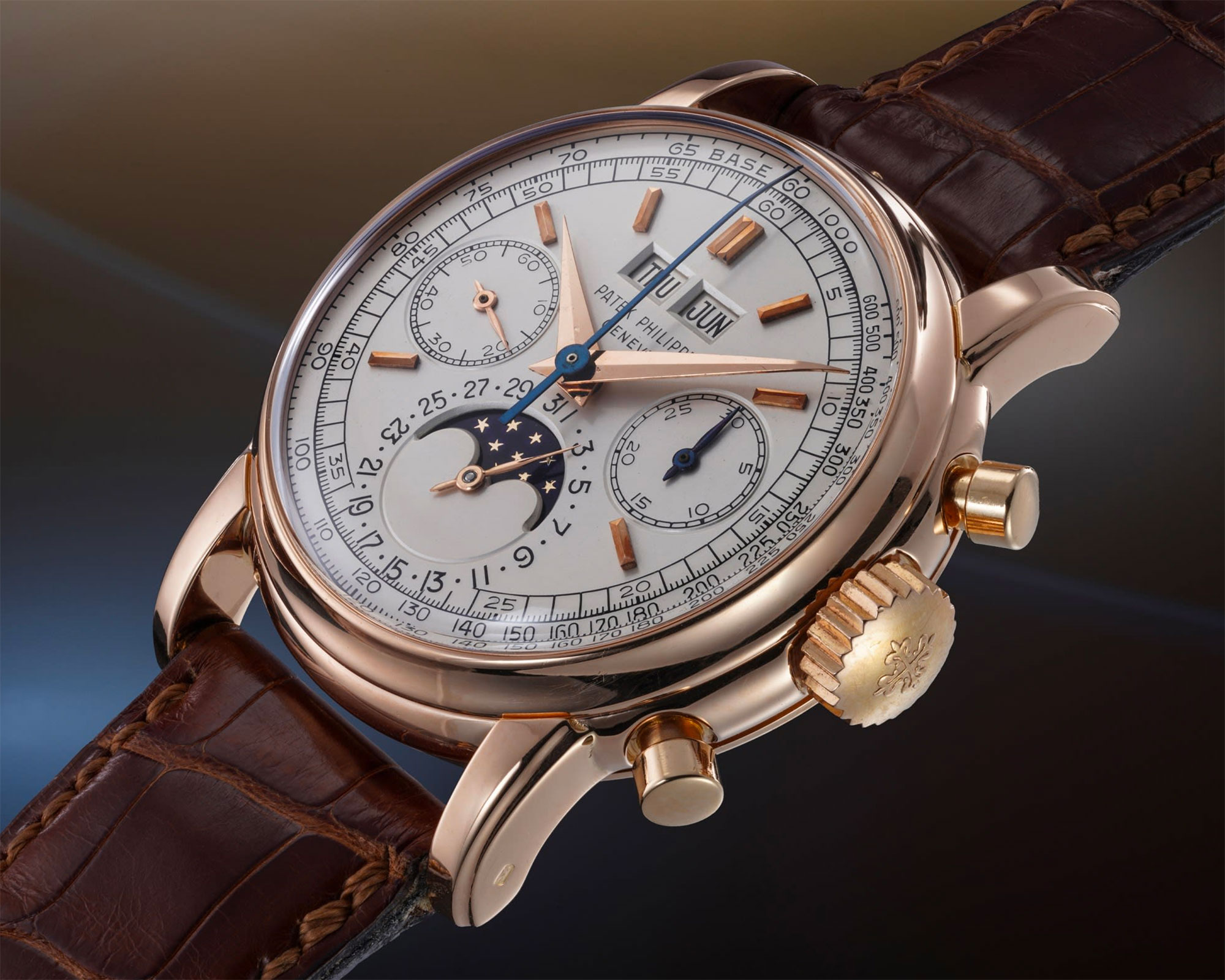
Top Lots of the Phillips Auction: The Geneva Watch Auction: XVII
Phillips has been a first port of call for auctions of classic wristwatches for the past seven years. This success can clearly be attributed to the work of Aurel Bacs, whose catalogues already set standards during his time at Christie’s. No other individual has had a greater impact on the market over the last 15 years. The thematic auction ‘Daytona Lesson One’ in November 2013 was as important a milestone as the legendary auction of the Mondani Collection by Osvaldo Patrizzi and Antiquorum in May 2006.
The incredible atmosphere in the auction room, which was filled to capacity during the Daytona auction, was repeated for the ‘Geneva Watch Auction I’ that Bacs implemented for Phillips in May 2015, and many times thereafter. Amongst several other world records set by Phillips since then, it was also Bacs who hammered Paul Newman’s own watch for a fantastic $17.4m in New York in December 2017.
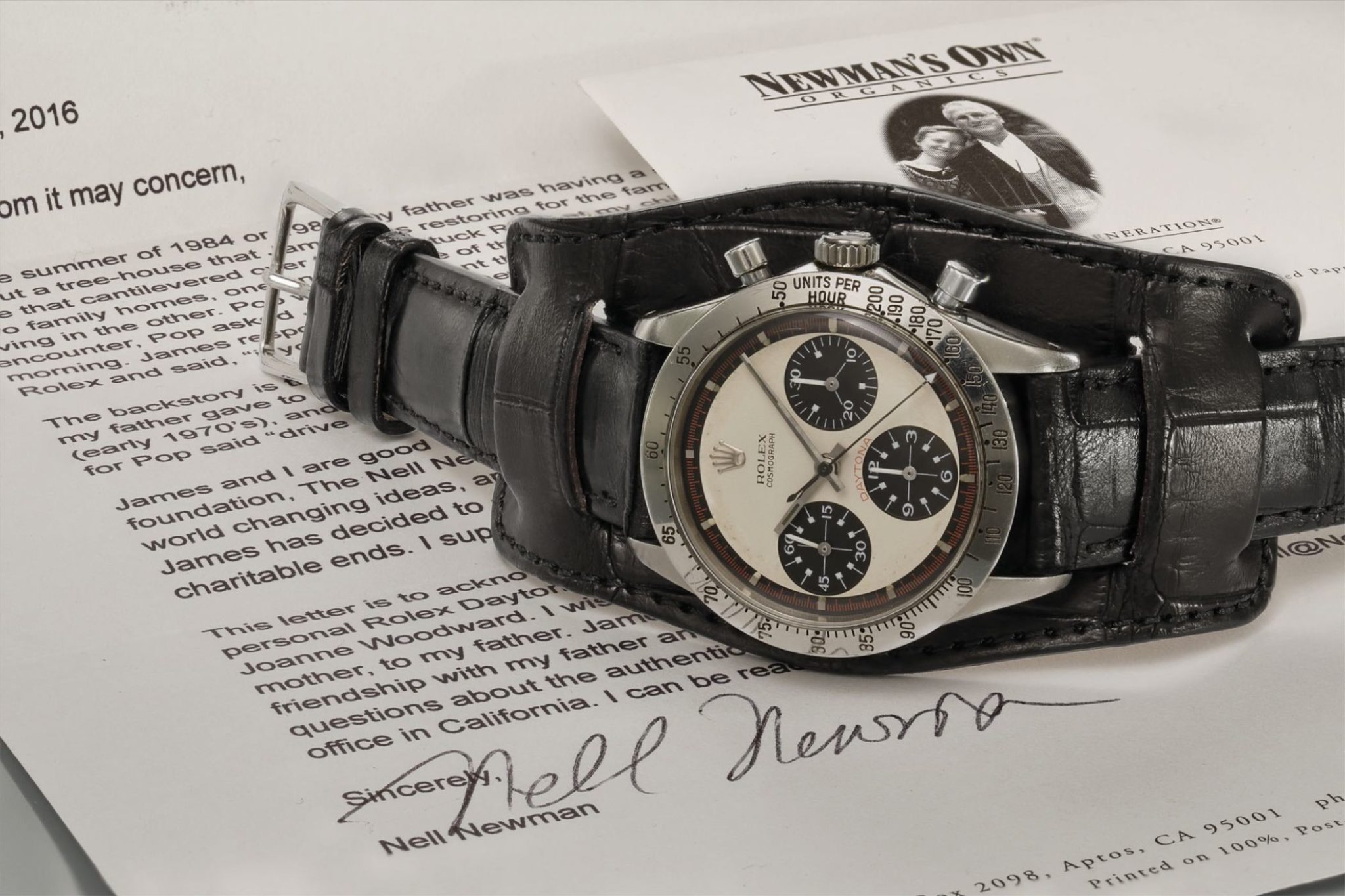
The “Paul Newman” Daytona with letter from daughter Nell Newman
Consistent sell through rates close to 100 percent combined with the highest hammer prices have led to owners of attractive lots trying to consign to Phillips first. Therefore, one is in a position to choose. Phillips catalogues are therefore curated and not simply a collection of consignments.
But beware, the auctions also have something resembling the high roller suites in Las Vegas. Lot 69 catches my eye because a collector and dealer friend consigned it to the ‘Geneva Watch Auction III’, where it sold for a total of CHF 185,000 (net) in May 2016. The automatic Patek Philippe Model 2526 with extremely rare black enamel dial is still estimated at 100 to 200,000 Swiss francs in the current catalogue. So should the hammer fall to the lower range, the current seller risks a loss of CHF 85,000, plus the catalogue premium at the time.
Today, Patek Philippe and Rolex appear as reliable pillars of the Swiss watch Olympus. For Patek, this was not always the case. For too long, the company had rested on the laurels of ultra-complex pocket watches supplied to wealthy US customers such as James W. Packard or Henry Graves. The growth of the wristwatch market, on the other hand, had not been taken seriously enough. When the party was over in 1929 with the onset of the world economic crisis, the company was left with nothing.
During the crisis in 1933, the Stern family mustered the courage and vision to take over the Patek Philippe brand and make the investments needed to give it the same place in the wristwatch market that it had long held in pocket watches. At its core, Patek is always about perfect (artistic) craftsmanship and the successful miniaturisation of complications.
LOTS 103 AND 206
Eight years after the Stern takeover, Patek launched reference 1518 in 1941 (lot 103), the first mass-produced perpetual calendar and moonphase chronograph for the wrist. To understand how far ahead of the competition this was, it is worth contrasting it with Audemars Piguet’s lot 206. Audemars is one of the few brands mentioned in the same breath as Patek. The Audemars from lot 206 is also a chronograph. Instead of a perpetual calendar with moonphase, this watch only has an annual calendar with moonphase, yet it was only produced two years after the introduction of the Patek Ref. 1518. Visually, too, the Patek with its date windows (‘a Guichet‘) looks tidier than the Audemars.
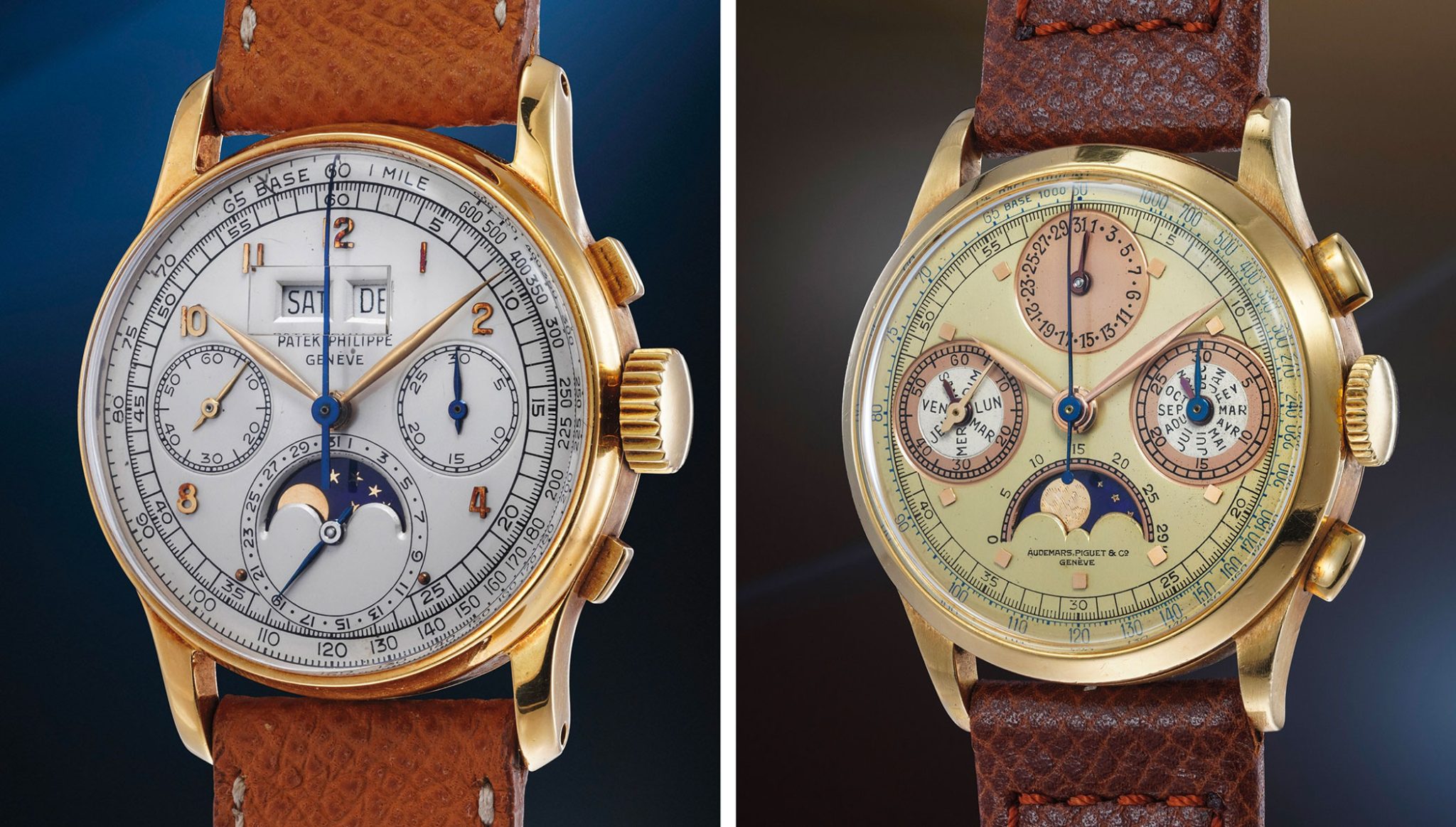
Lot 103: Patek Philippe Ref. 1518, est. €408,000 – 816,000
Lot 206: Audemars Piguet Ref. Photo reference 831, est. €153,000 – 306,000
The 1518 model was the starting point for Patek’s dominance in the complicated wristwatch segment, which continues to this day. This is certainly why its memory is cherished in the form of ever-new generations of models (cf. lots 10-13, 55). A nice essay on the subject can be found in the Phillips online catalogue.
LOT 23
The top lot in the upcoming auction is also a Patek Philippe perpetual calendar and moonphase chronograph with the reference 2499, from 1953. For fans of vintage Patek wristwatches, it can hardly get any better.
The reference 1518 was first supplemented and later replaced by the model 2499 (lots 23, 140 and 207) in 1950. The 2499 had the same movement as the debut model, but was able to impress many with its superior looks. The new case has a stronger presence with a more contemporary aesthetic, and the dial is even tidier than its predecessor.
With the lot 23, everything comes together: the exclusivity of an item reserved for only a few at all times, the popularity of the second-generation model, where the round pushers, together with the bar indexes of the dial, create a timeless design – and of course there’s the rose-gold case. Only eight examples are known to exist.
The condition of the watch, as with many valuable vintage Patek watches, appears to be almost perfect. Patek Philippe watches have always been expensive purchases, and this naturally increases the likelihood of the watches being well looked after. Patek has also always been willing to care for vintage timepieces. The manufacture’s ateliers devote the same care to restoration as they do to the production of new watches.
Dials, however, usually look like they have gone under some sort of cosmetic treatment. This is another reason why they are so important for the valuation of vintage watches. A special feature of vintage Patek dials is their enamelled graphics. Conventional dials are printed using pad printing. When dials printed in this way are cleaned, the graphics are often lost in whole or in part. This results in reprints, which then greatly impair the value of the entire watch.
The enamelled graphics of Pateks, on the other hand, survive even a silver bath almost undamaged. The original characters shine in new splendour. Connoisseurs like to examine the accent above ‘Genève’ to judge whether a Patek dial has been restored or not.
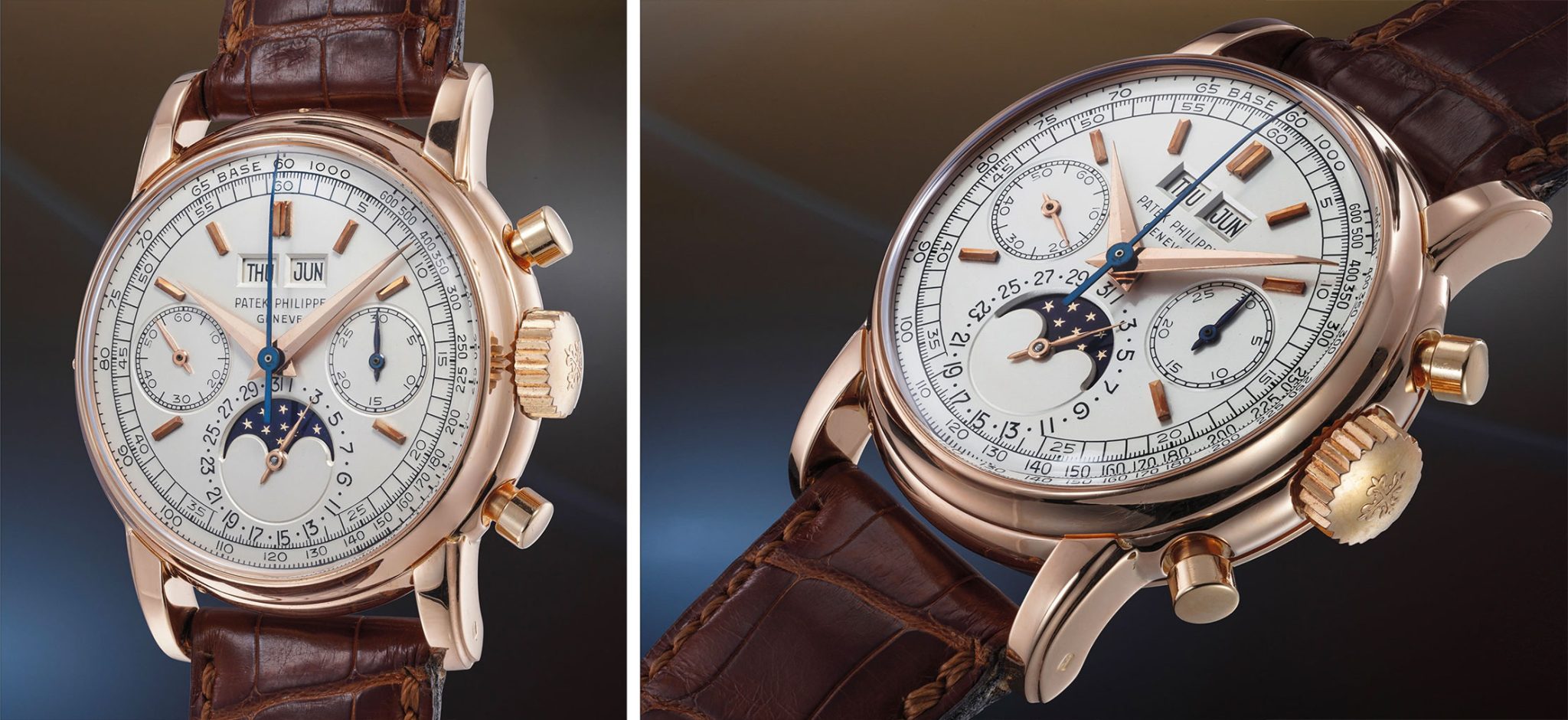
Lot 23: Patek Philippe Ref. 2499, est. €1,530,000 – 3,050,000
LOT 145
A second, strategically important strand of wristwatch development at Patek was perpetual calendars without chronographs. These watches were based on in-house calibres, which were also developed in the course of the reorientation under the leadership of the Stern family. At first, they were hand-wound calibres and then, from 1962, movements with automatic winding.
Among collectors, automatic perpetual calendars with a central rotor from Patek are often called ‘Padellone’ (frying pan), a nickname borrowed from the Rolex model 8171. This watch was also an automatic calendar watch with moonphase, but also only an annual calendar.
What both watches have in common is that their cases are very delicate towards the lugs. If they are not polished properly, they lose their symmetry, which greatly affects their value. Consequently, watches in which the small, angular lugs and the stamps underneath are intact are particularly valuable. Lot 145, according to the catalogue, is such an example and comes from a small series produced in white gold in the early 1970s. The cherry on the cake is the early ‘Sigma dial’ with an inverse date ring.
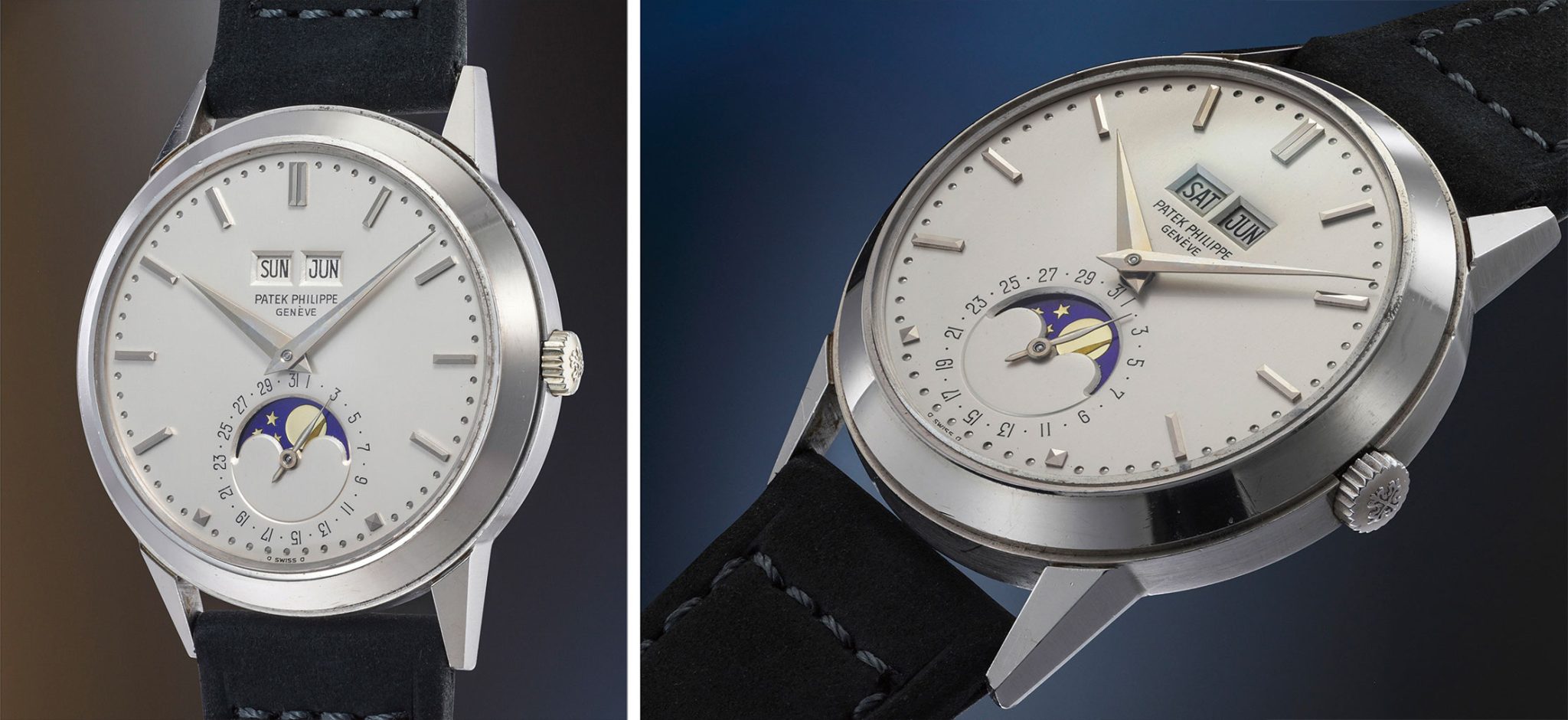
Lot 145: Patek Philippe Ref. 3448, est. €508,000 – 1,020,000
See also lot 120 Ref. 3450 with leap year indication
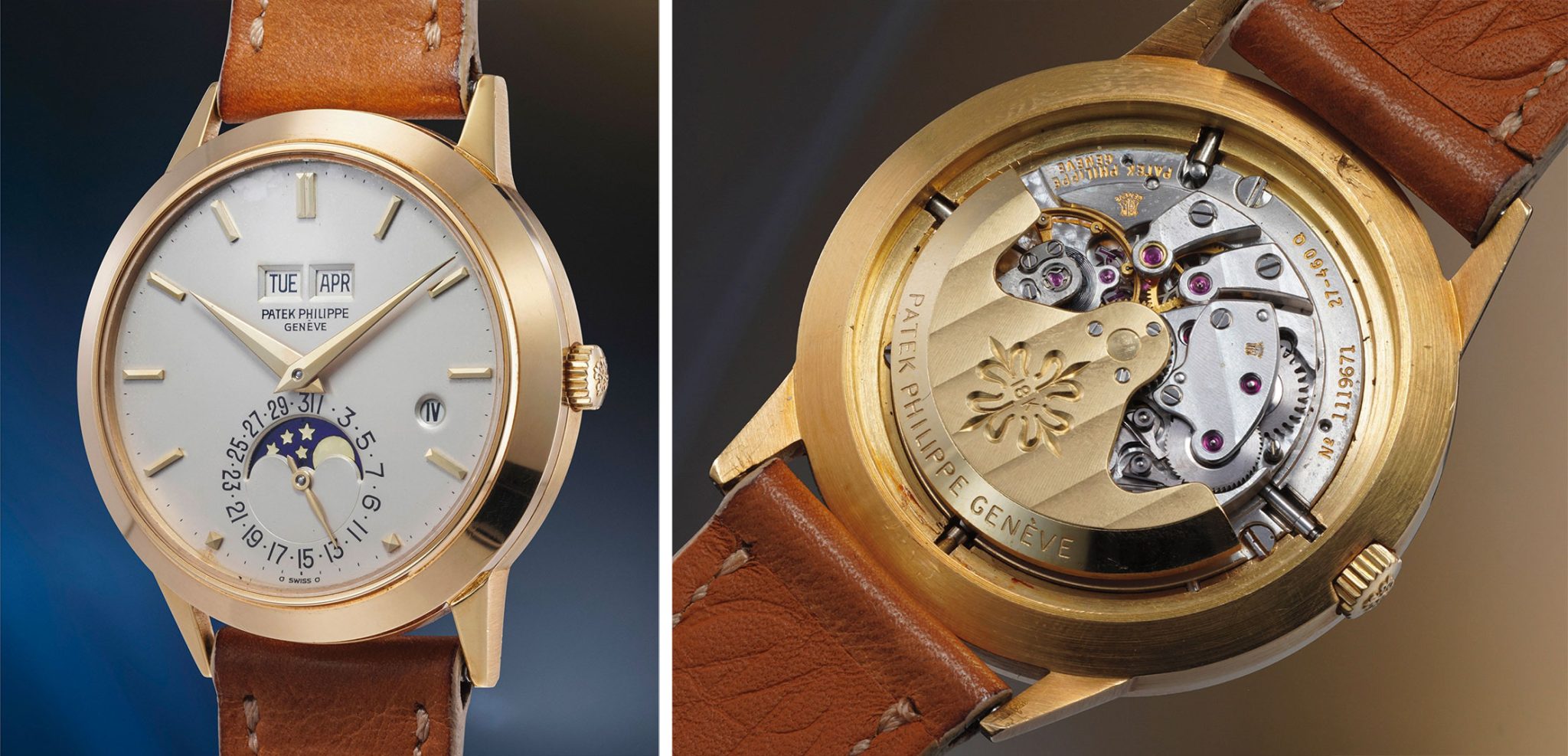
Lot 120: Patek Philippe Ref. 3450, est. €122,000-245,000
LOT 7
Surprisingly, Patek Philippe only introduced its first own chronograph movement for wristwatches in 2010. Until then, base movements from Valjoux and later Lemania were used. The introduction of the calibre 29-535 PS was a sensation. It quickly becomes clear why when you look at the beauty of the movement. The 5170 model was Patek’s first simple chronograph with a manufacture movement and retro dial graphics. The model was discontinued in 2019 and rare examples in platinum, like this one, will never lose their value if bought at the right price. Everyone would love to have a watch like this in their safe.
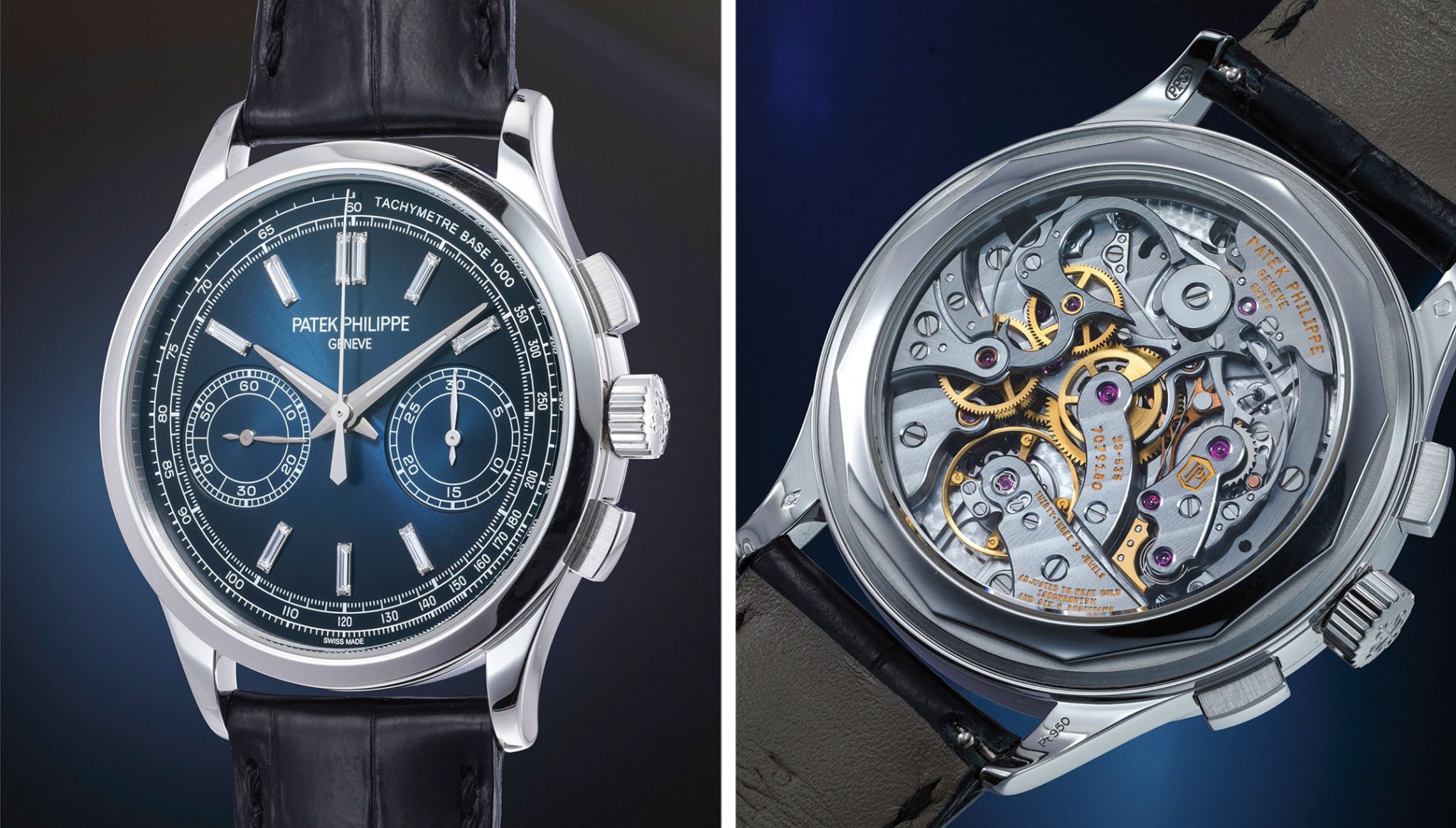
Lot 7: Patek Philippe Ref. 5170P-010, est. €71,200 – 142,000
LOT 202
The last Patek I want to mention is the Nautilus in lot 202. It is certainly a source of discomfort for Patek Philippe that many fans today associate the brand name primarily with the Nautilus model and would prefer to have one in steel. As we all know, the 5711 was discontinued last year, so enthusiasts will have to make do with the examples produced so far. The limited-edition turquoise Tiffany dials and the olive-green dials of the last production run literally made the market boil over. The smoke has now cleared, and the Nautilus will continue to exist in the future with the reference 5811. So, a 5711 in platinum offers the highest level of exclusivity. Combined with the all-blue dial, Lot 202 combines casual elegance with perfectly executed understatement – if a Patek can ever be ‘understated’!
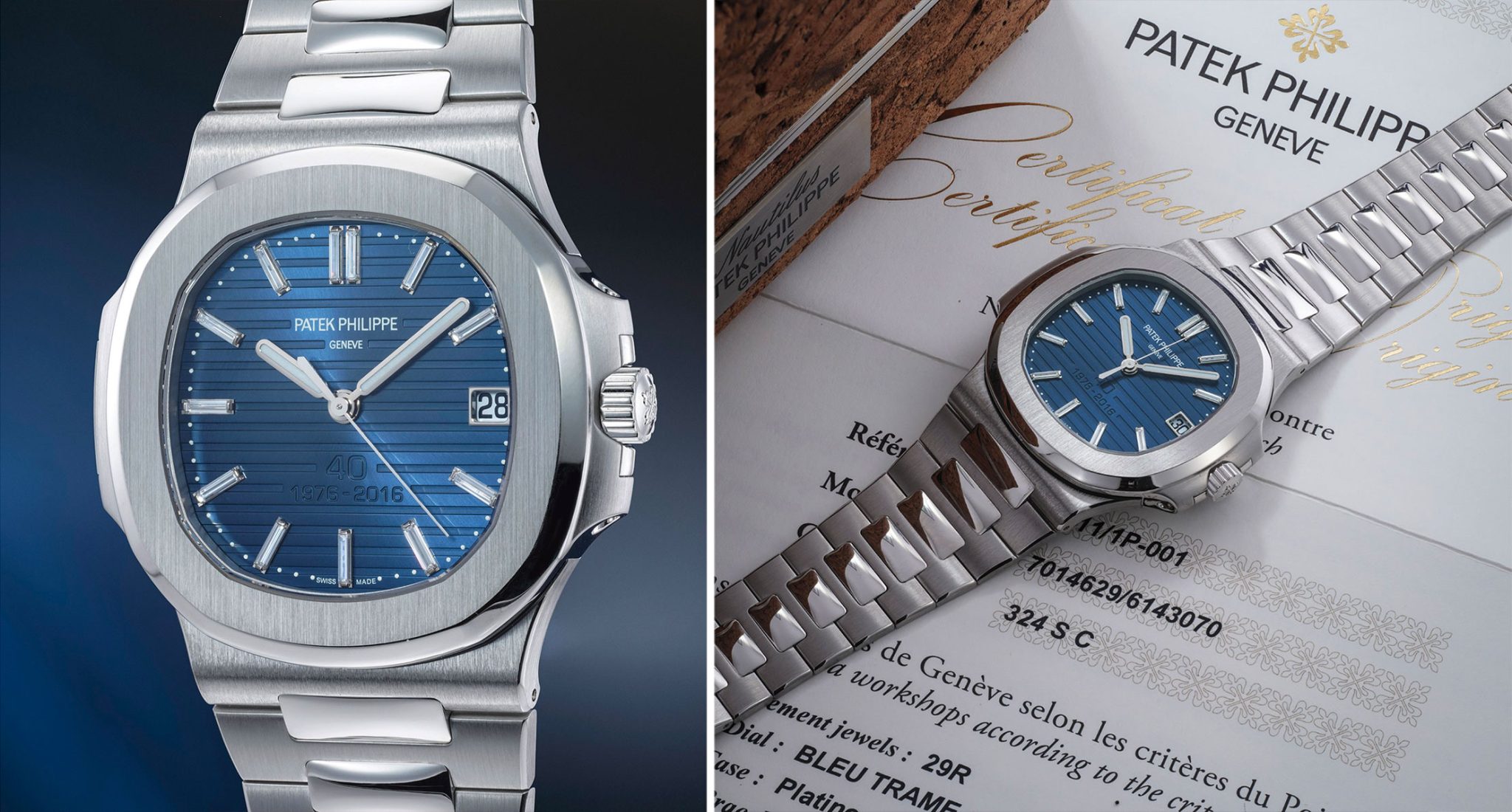
Lot 202: Patek Philippe Ref. 5711/1P-001, est. €255,000 – 509,000
Of course, Rolex fans also get their fill. I counted no fewer than 21 Daytonas (over 10% of all lots). The ratio has shifted in favour of automatic models. Especially in this case, it is true that something special has to be offered in order to be included in the catalogue. For models in precious metal, a multitude of different dial variations have been offered over the last 30 years. The key to collectors’ happiness lies in recognising which ones are particularly beautiful and rare.
LOTS 102 AND 117
Definitely valuable in this day and age are the jewelled variations (e.g. lots 102 and 117). This was not always the case. In the days of manual-winding Daytonas, Rolex watches with brilliant-cut diamonds and gold bracelets were regarded in many places as a sign of an excessive need for prestige or even as badges of guilds to which one did not want to belong. In this respect, the world has changed, not least with the increasing prosperity in Asia and Eastern Europe.
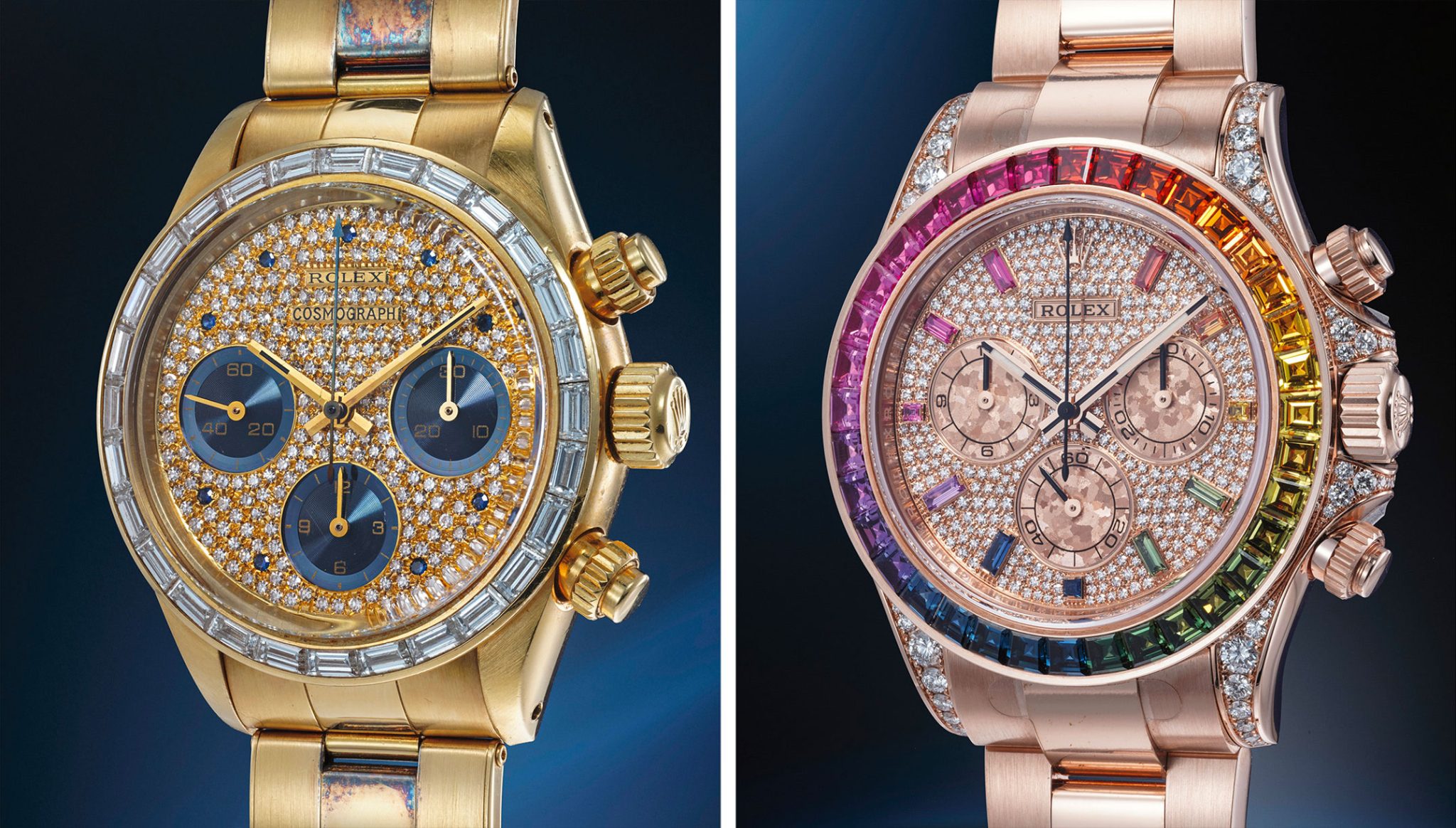
Lot 102: Rolex Ref. 6270, est. €1,220,000 – 2,450,000
Lot 117: Rolex Ref. 116595RBOW ‚Rainbow Bezel‘, est. €204,000 – 408,000
It is precisely the fact that there are few Daytonas with manual winding and precious stones that makes them so valuable today. A true anecdote is that the auctioneer Stefan Muser (Dr. Crott) received a Rolex reference 6270, still unworn and in its original box, because the owner never wanted to wear it. This restraint paid off last year: the lot fetched almost 2.1 million euros. Even after deducting the hammer premium, there was a nice stack of money left over!
The counterpart to the ‘Paul Newman’ in automatic Daytonas is the ‘Floating Dial’ (lots 116, 118 and 154). The difference to the standard version, however, is much smaller than with ‘Paul Newmans’. Those who are nevertheless prepared to accept the hefty surcharge should definitely investigate whether it is a ‘porcelain dial’. Because of the thick layer of clear varnish, these dials have a much greater radiance than those that have merely been simply lacquered before printing.
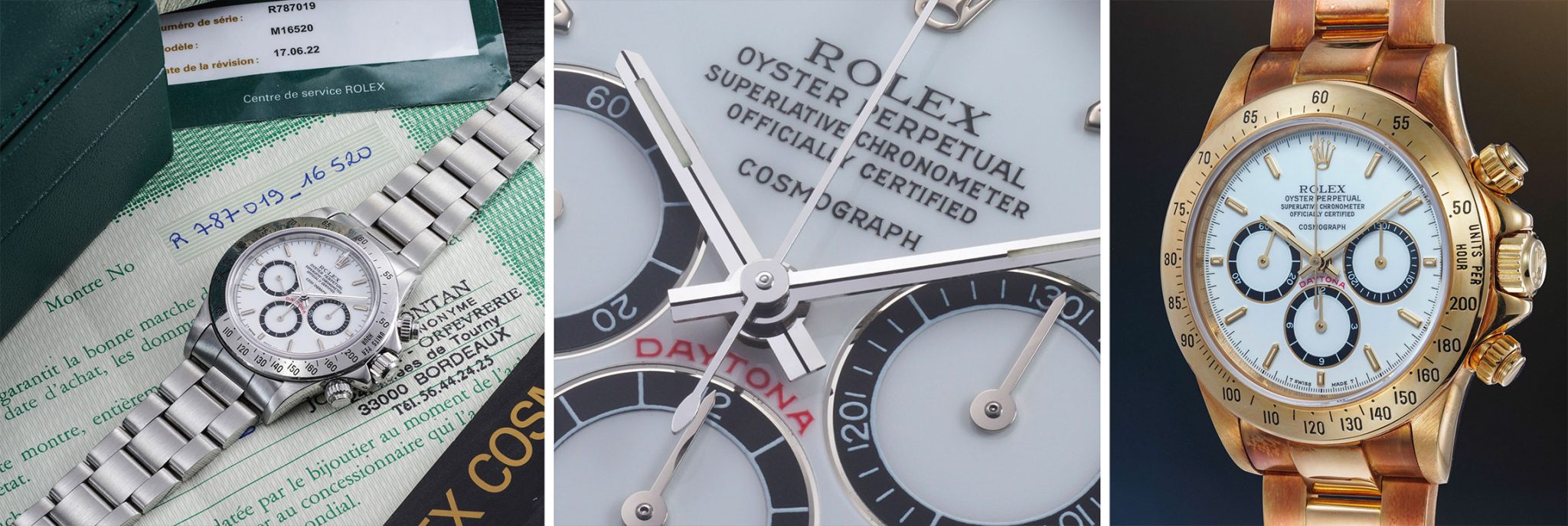
Lot 116: Rolex Ref. 16528, est. €81,500 – 163,000
Lot 118: Rolex Ref. 16520, est. €71,300 – 143,000
LOT 144
A valuable automatic Daytona can be found in lot 144: a black dial steel watch with additional ‘Tiffany’ lettering. The watch has retained its caseback sticker and comes with Tiffany papers. Individualised dials add value in any case. The ‘Tiffany’ name further adds to the exclusivity, especially on a 1987 Rolex. The collaboration between the two houses ended a short time later. This makes the watch one of the last of the Mohicans – and an ‘R-Series Floating Dial’ to boot!

Lot 144: Rolex Ref. 16520, est. €81,500 – 163,000
LOT 201
An interesting Daytona with manual winding is lot 201. When it was introduced in 1963, Rolex did not yet call the chronograph ‘Daytona‘. They first recycled the name of the legendary reference 6062, christening it the ‘Cosmograph’. Perhaps the reason was that J.F.Kennedy had announced his intention to fly to the moon the year before.
However, then it was decided that the model should also be dedicated to motor sports as well. The 1960s were the heyday of sports car racing. Some say the watch was first to be called ‘Le Mans’, after the famous 24-hour race in the Sarthe. However, it was decided in favour of the American counterpart ‘Daytona’, possibly because it was already apparent in 1964 that Carol Shelby would bring the sports car world championship title to the USA with his Ford GTs, but perhaps also because it was realised that the US market had greater potential.
Lot 201 is a Daytona reference 6239 from 1966. Three years after its introduction, the decision had long since been made in favour of Daytona and the dials were printed accordingly. The lot presented here, with a serial number around 1.4 million, does not bear a Daytona imprint, although it became standard for serial numbers above 1 million. The ‘T Swiss T’ designation proves that the dial was produced in 1964 or later. The watch seems to have been sold in Switzerland. In addition, the registers in the photo seem quite large to me, so this lot is really something special.
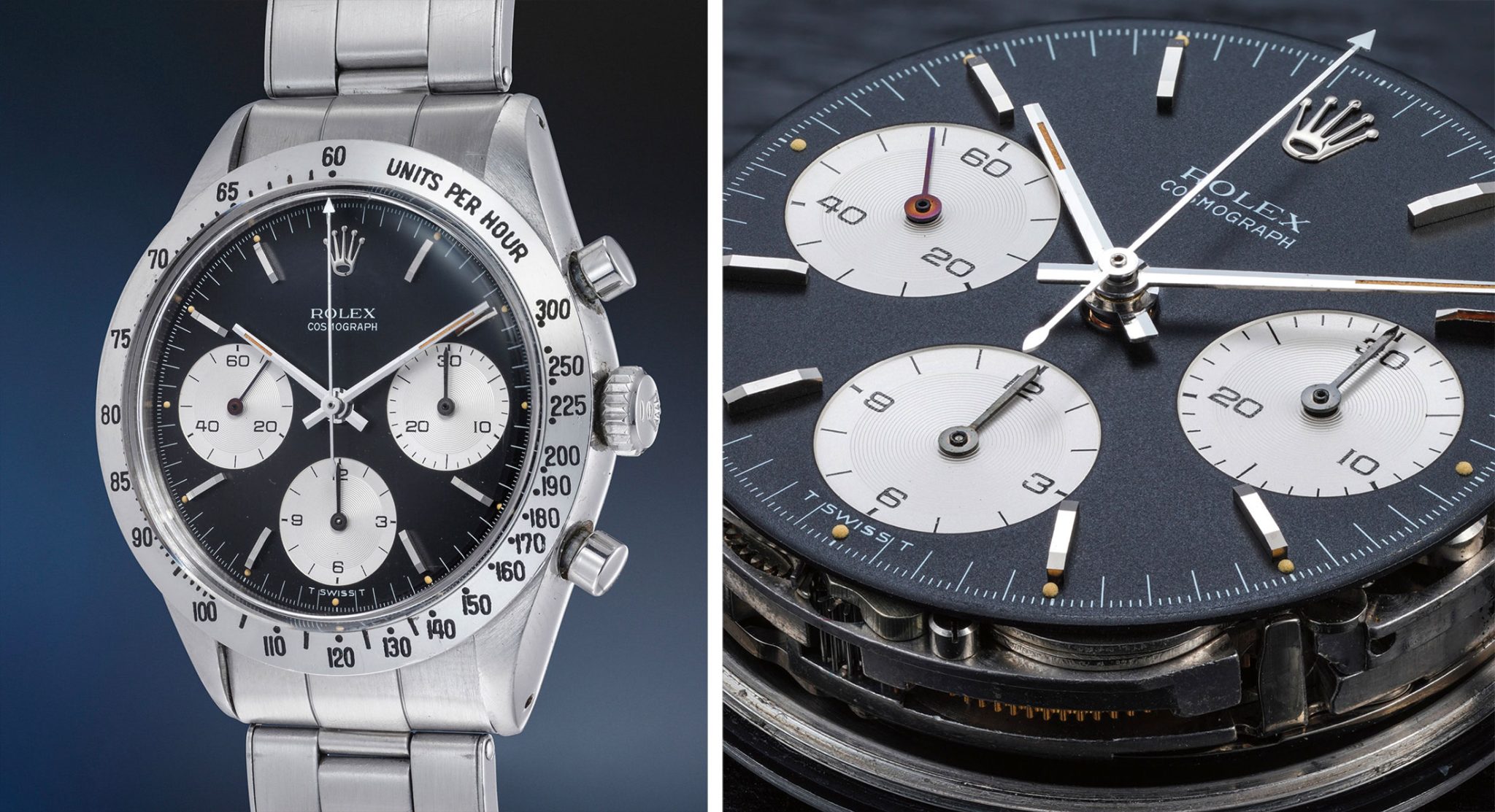
Lot 201: Rolex Ref. 6239, est. €50,900 – 102,000
Besides Daytonas, there are a few other interesting Rolex watches to admire. Even before the ultimate success model, Rolex produced chronographs in the ‘Oyster’ case for over 20 years. Until the mid-1950s, variations were available in steel, yellow gold and rose gold. These watches, with their two-piece cases in which the bezel and carrure form a single piece, hardly meet today’s need for presence on the wrist. This changed with the 6234 model, which is still well received today with its three-piece design. However, this reference only came in steel and yellow gold.
LOT 20
Lot 20 with the reference 6232 is thus the only classic Rolex chronograph with a three-piece case in rose gold that I know of. In addition, it differs from the standard model 6234 by the absence of the hour register at 6 o’clock. In the many years that I have been involved with the subject, I have only held two of these watches in my hands. Although the case, in photos, resembles that of the reference 6234, it is a completely separate design. I am already looking forward to examining the watch on the morning of 13 May at the La Reserve Hotel.
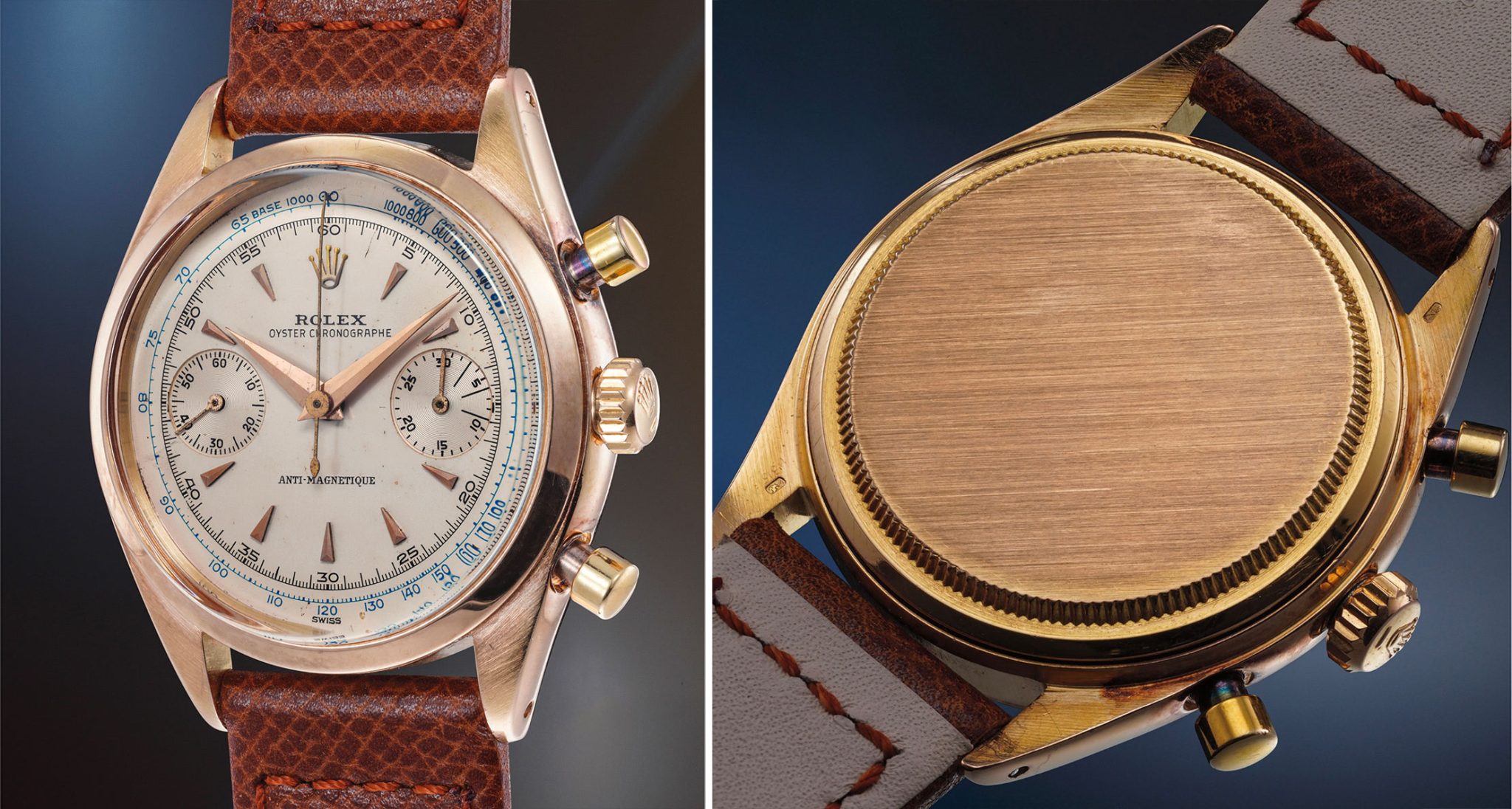
Lot 20: Rolex Ref. 6232, est. €153,000 – 305,000
LOT 25
Another interesting Rolex is lot 25, a Milgauss reference 6541 from 1958. Milgauss models were produced much less frequently than GMT‘s or Submariners. At times, the model was even discontinued altogether before being revived in 2007. Therefore, only a few early examples can be found today. It is particularly rare to find watches with their original components in good condition. Yet this is the case with lot 25, making it a valuable antique, which is reflected in its high valuation. Even the bezel inlay, which is highly vulnerable, is perfectly preserved and the ‘waffle’ iron dial shows no visible signs of oxidation. The clean and symmetrically broken edges to the case flanks also come out beautifully. The watch also comes with documentation and original box.
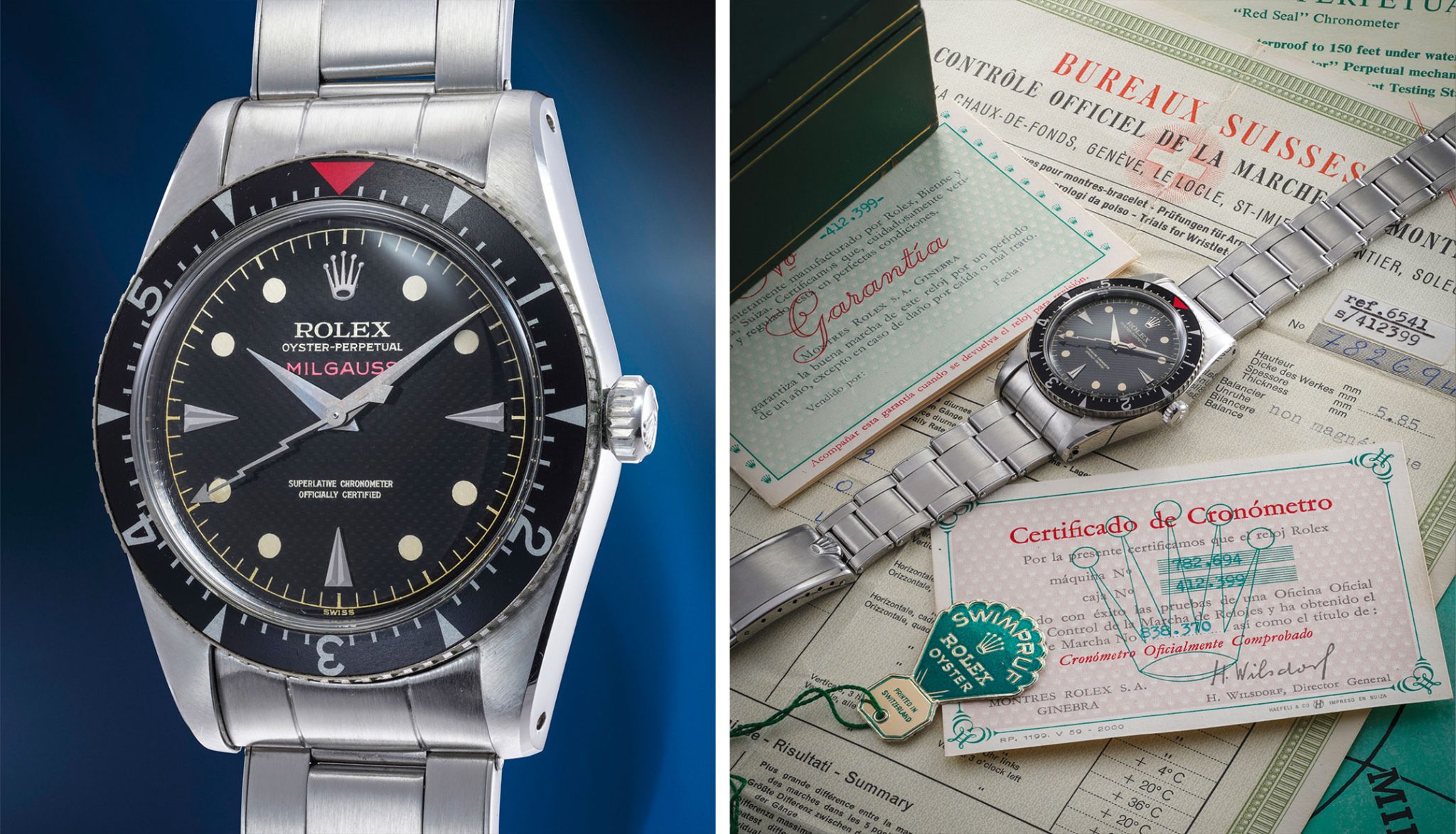
Lot 25: Rolex Ref. 6541, est. €509,000-1,020,000
At Phillips, it is not always easy to find lots that are suitable for amateur collectors. They have probably realised this and are always including pieces that do not belong to the luxury category, but which deserve attention because of their aesthetics and/or craftsmanship. Examples in the past include watches by Ming or Habring (lot 30).
In the current catalogue, lot 146 strikes me as very desirable. It is a Lange, so it is in the same league as the top Swiss watch brands. Although it is a ‘time only’ watch, i.e. without additional complications, its design is one of great elegance. The white-gold case harmonises perfectly with the ‘terra’ brown dial, and at 38.5 mm in diameter, it doesn’t look too ostentatious. Add to this the fact that it is a limited edition, produced to celebrate the reopening of the Lange boutique in Tokyo in 2016. The automatic movement has a power reserve of 3 days and is finished in the usual perfect Lange style, including a freehand engraved balance cock made of nickel silver.
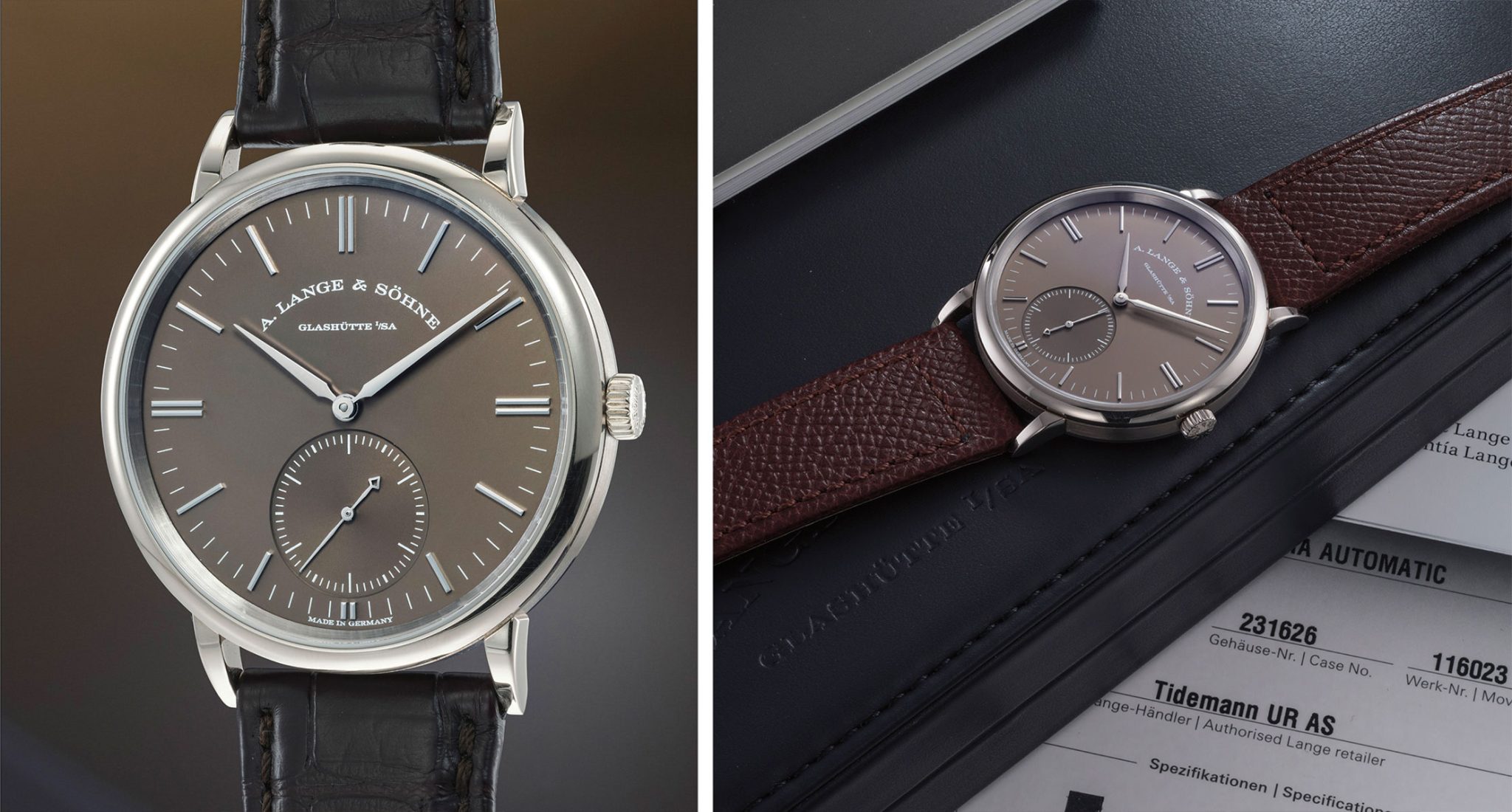
Lot 146: A. Lange & Söhne Ref. 380.044, est. €12,200-18,300
LOT 32
Lot 32 is also a ‘time only’ watch, but without automatic movement. The valuation between 250 and 500,000 Swiss francs already indicates that it is a special piece. Phillips has been an important promoter of independent watchmakers of the Haute Horlogerie and has brought many remarkable watches from brands such as F.P. Journe, Daniel Roth or De Bethune to auction.
Lot 32 is a ‘Philippe Dufour’ and thus bears the name of one of the founders of the independent movement. It is difficult for new watch brands to develop an independent profile, as ground-breaking new inventions in the field of precision and complication are hard to imagine. Philippe Dufour did, however, draw attention to himself in 1992 by presenting the first wristwatch with ‘Grande et Petite Sonnerie’.
Since then, he has built a reputation for making his watches with even greater care than Patek Philippe (if that is even possible). As a result, even watches without complications become coveted collector’s items. The master seems a cliché, working secluded in the Vallée de Joux.
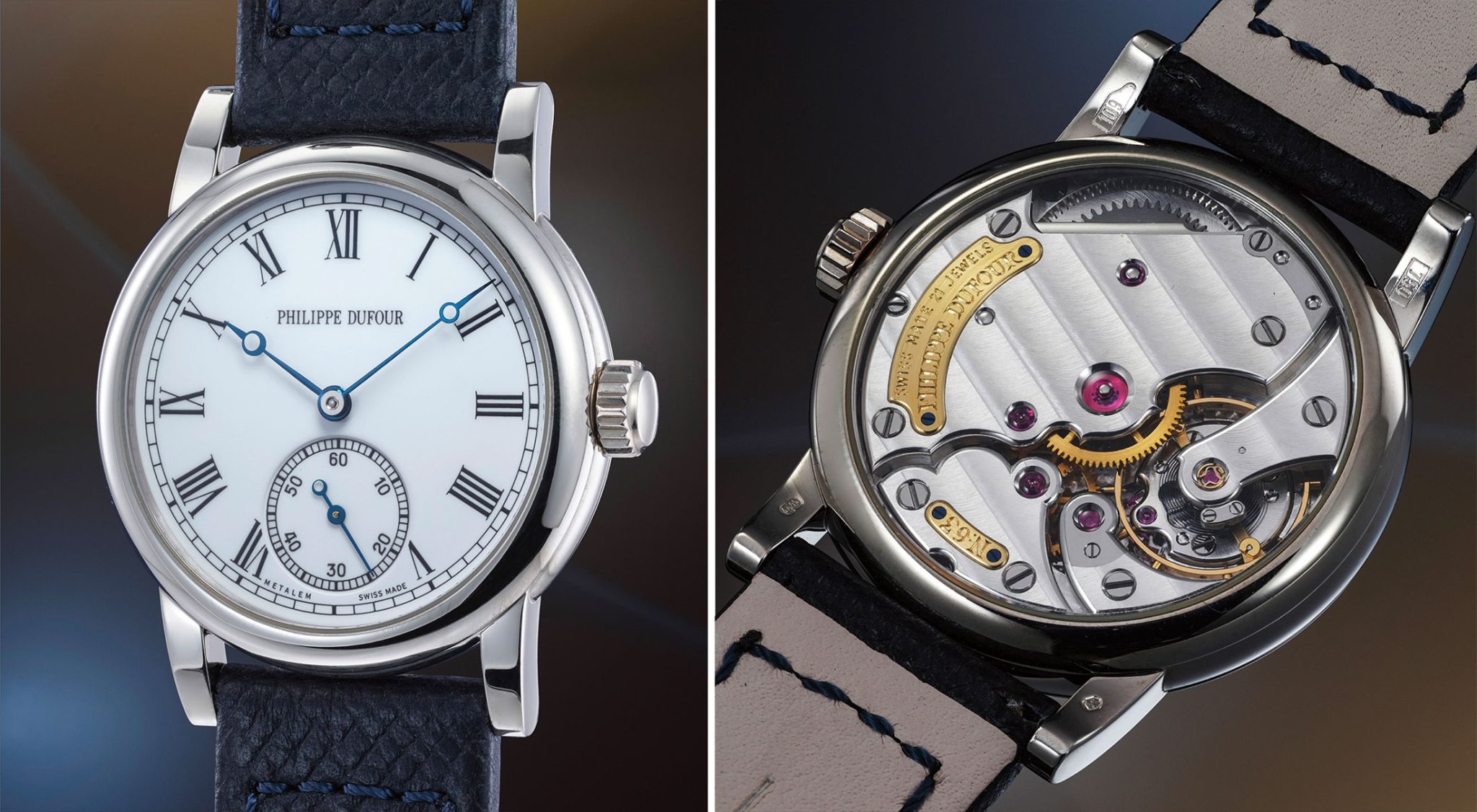
Lot 32: Philippe Dufour, €254,000 – 509,000
LOT 128
The last watch I want to mention is lot 128. Jean Claude Biver can easily be considered the counterpart of US banker Jamie Diamond in the watch world. Everything he touched in the past seemed to turn to gold. He was behind the surprising revival of Blancpain at a time when mechanical watches aroused little interest. He was also the one who made Hublot relevant with massive sports watches to an audience willing to invest large sums of money for limited editions that were also highly recognisable.
Now he has set out to crown his life’s work with watches bearing his own name. In this way, he is also paving the way for the next generation by making his son a partner in the venture.
The watch itself shines with its very complicated movement, the use of innovative materials and a high quality of workmanship. It is also a prototype, and its combination of materials is unique. The Pièce Unique has a striking movement, with a three-tone announcement of the quarter hours (‘Carillon’) in combination with a tourbillon. The dial is made of obsidian, a stone-like material of volcanic origin. It is curved, polished and cut out in an incredibly thin piece measuring 0.6 mm. All movement parts are finished on both sides.
There is no valuation even upon request, so the lot will definitely not disappoint!
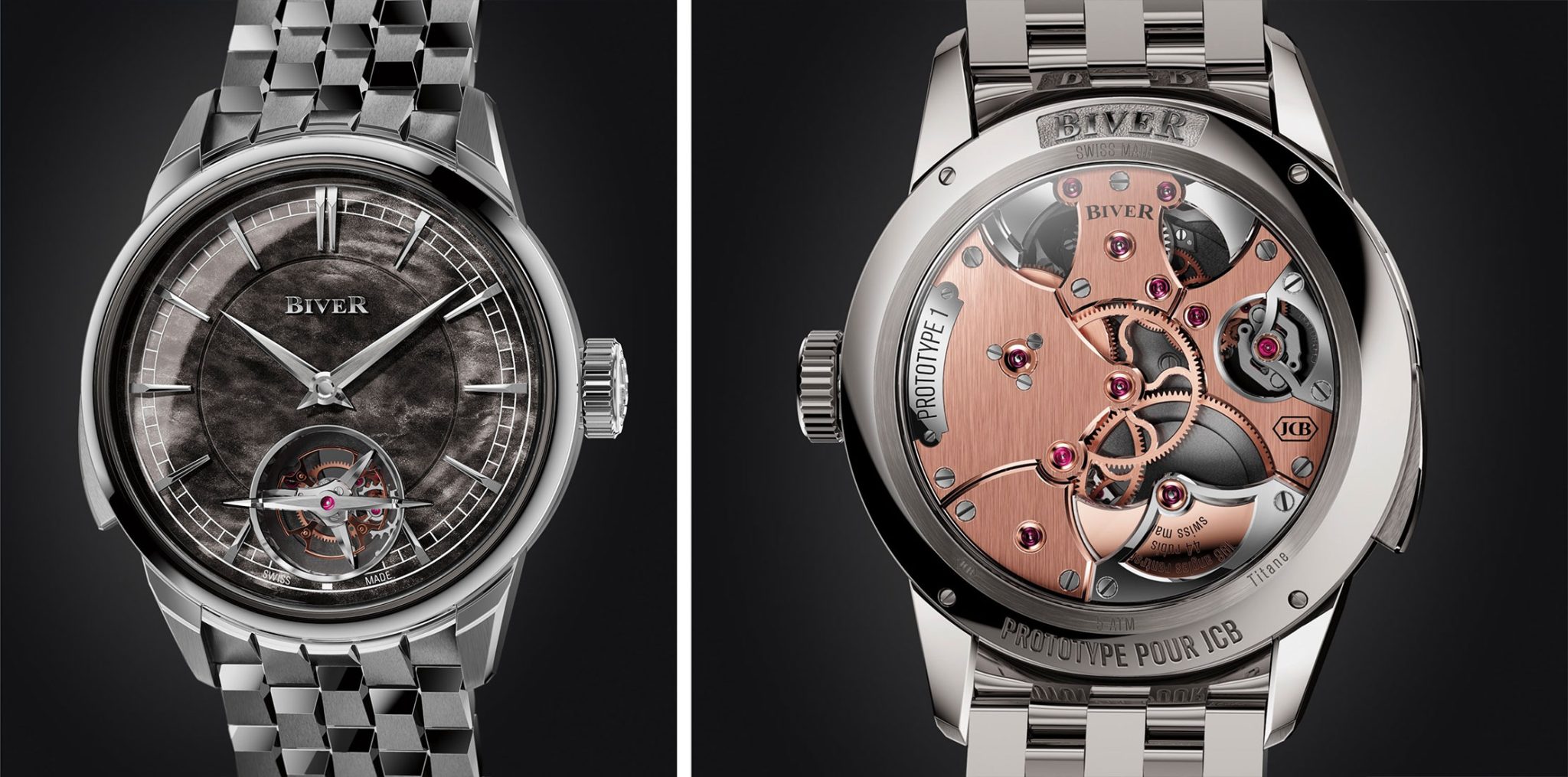
Lot 128: Biver – prototype, est. on request.
Photos © phillips.com
